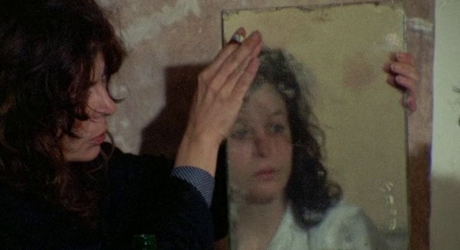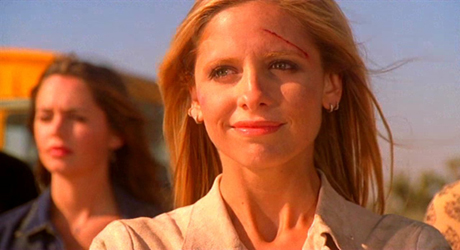
In Beirut, trauma and destruction make for emblematic bedfellows. Where the Orientalist imaginary sees that city as one of carnal pleasures, the modern history of Lebanon is one of intergenerational trauma woven through decades of wars—a natural consequence of colonial empires drawing borders where previously there were none. A nation-state birthed by a Franco-British alliance which premised the drawn-up borders on religious demographics, Lebanon’s frail foundations were bound to collapse as they did during that war. Over the first seven years of the fifteen-year civil war, Jocelyne Saab shot her Beirut trilogy: Beirut, Never Again (1976), Letter from Beirut (1978), and Beirut My City (1982). Oscillating between nihilism and a desperate need to hang on to hope, trauma features as the main character of these storylines. The loss of reality in the face of the population’s extreme traumatization triggers a pathological normalization of violence that makes clear in subtle ways that the scale of the destruction is merely a symptom of a much bigger disease.
At the start of Beirut, Never Again, we are propelled straight into chaos: the film begins with a succession of images of rubble, not pausing to offer context beyond destruction to the viewer. The scale of the damage begs an important question: what prompts such depravity? The culprit here lies in the colonial history that led to the establishment of the state of Lebanon. The French mandate—though brief—lasted long enough to fragment the identity of a population whereby one segment sought to assimilate to a European identity whereas the other pledged allegiance to a pan-Arab dream that never materialized. The ideological rift grew wider, especially following the establishment of the state of Israel in 1948, forcing the newly displaced Palestinians to seek temporary refuge in Lebanon while fighting for the right to return to their homeland. This sequence of events led to the eruption of a civil war in 1975.
The continuous sound of the Mediterranean’s waves paired with the intermittent sound of fired shots overlays Beirut, Never Again’s images of destruction. A mere shadow of its former glory, the city doesn’t live in darkness so much as it has come to embody darkness through its skeletal buildings and its streets devoid of the usual hustle and bustle of dwellers going about their day. Charred limbs are scattered among the gravel of what appears to have once been a brothel. As the camera scans the room, the narrator informs us that “The party is over. Or rather it has been replaced by a blood bath.” The starkness of the statement signals a certain finality not just in terms of the lives lost, but more in the sense that the age of insouciance is gone and can never be brought back.
As the camera scans the room, the narrator informs us that “The party is over. Or rather it has been replaced by a blood bath.” The starkness of the statement signals a certain finality not just in terms of the lives lost, but more in the sense that the age of insouciance is gone and can never be brought back.
The sea asserts its presence again as an omniscient witness to an ongoing tragedy in the opening scene of Letter from Beirut. The narrator is seated at a table in a coffee shop by the Mediterranean, writing a letter, when she remarks, “People go on behaving as if everything is still normal. They keep talking about the civil war, calling it ‘the events.’ It’s amazing to see how their will of not admitting it’s a catastrophe is betrayed in their language.” Language, here, is a weapon used to fence oneself off from the war. It is the one tool the people have left that can give them some sort of agency over their lives. Can something exist if it hasn’t been named?
Where Beirut, Never Again introduces the destruction of the city, Letter from Beirut focuses on how people inhabit this destruction. By 1978, the war had briefly died down. The country’s future was entirely unknown, but a certain semblance of calm had permeated the streets prompting citizens to resume a semi-normal life. The city bus takes center stage as it is the one public space where different segments of the population can be seen altogether. Its significance operates on two levels. On one hand, it is the only mode of transportation bridging a place that, much like Berlin, fragmented itself into an “east” and a “west.” On the other, considering that the civil war itself was ignited after Palestinian refugees were shot on a bus in 1975, the idea of a bus donated by the French government almost makes the vehicle seem like the colonizer’s Trojan horse. France may no longer be in charge, but its presence lingers and subtly fuels the flames of a ferocious war. Amidst the rubble, one can see French signage that previously hung on storefronts. In another instance, friends gathered at a dinner party converse in a mixture of French and Arabic. Even as she can be seen riding the bus across a divided city, Saab makes it a point to remark that the buses are gifts from the French government. Colonization is not merely a question of occupying land, it is also about altering a culture so profoundly that it reshapes the colonized’s identity. The French mandate’s lasting impact has altered the country’s education system along class lines. Those who yielded to the colonizer’s tongue use it to assert their socio-economic dominance. Language, to an extent, has also become a weapon used to assert sectarian identity in a country fragmented along antithetical ideological lines.
Language, to an extent, has also become a weapon used to assert sectarian identity in a country fragmented along antithetical ideological lines.
Resilience is intertwined with a despair that has escalated with the sharp vicissitudes of fortune that have people huddling in line waiting for their ration of bread. It is also perceptible in the narrator’s insistence on frequently dredging up the myth of Beirut’s former glory days. Glorifying the past signals a desire to avoid the present by hiding in a reminiscence. In Beirut, Never Again, the narrator remarks that the same architect who designed New York’s MoMA also designed Beirut’s Holiday Inn. While the former went on to become a monument for contemporary culture, the latter became a sniper’s haven. The sinister contradiction highlights a tragic missed opportunity for a city that has irreversibly veered off course. In Letter from Beirut, resilience is seen on the bus, through an interaction between an old man singing a French song and an officer calling him out for not having paid the fare, demanding that he get off immediately. The man ignores the order and gleefully sings: “Some run for their life / I follow my own pace/ Some people go wild / I ventured into nothing.” Resilience, here, comes in the form of a certain absurd laissez-faire. Despair, however, is more vocal, showing up in other insidious ways through people’s desperate need for literal miracles. A woman claims that the Virgin Mary came to her in a vision and promised to bring back her kidnapped son and husband, so long as she promises to build her a shrine down the block. “When nothing is true, everything is possible,” says the narrator.

The final installment of the trilogy, Beirut My City,, takes place in 1982—one of the darkest and likely the most brutal year of the war, marked by the Israeli invasion. In this film, the focus is on seeing the city as a memorial: “Every name is a story, every place, a memory.” In the opening scene, Saab is standing in the middle of her bombed-out house, a 150-year-old structure that was razed to the ground during an Israeli air raid. She states that the house is a large part of her identity. As she roams the rooms in disbelief, describing what used to take place in some of them, her stories are haunted by those of countless similar people whose identities were torn to pieces after their houses were reduced to rubble, broken glass, and ashes. Out in the city, missile shells are displayed for sale at a stand, the absurd inextricably bound to the tragic. After a brief respite in the second installment, an avalanche of charred limbs and burnt faces take over the screen. The sequence is violent. The quick succession of each of the grotesque scenes and gore-filled images creates an intense viewing experience. The content and framing of these shots is assaultive, turning the film itself into a war. Naked young boys are seen crawling about, their bodies covered in flies. Corpses, limbs, and people lying on gurneys hanging between life and death make it clear that what is being documented is the putrescence of despair shown through scenes devoid of any dialogue. Children are pillaging what’s left of demolished houses. The narrator goes silent taking on the role of a fly on the wall. The amount of destruction is raw and unfiltered. These images are demanding to be seen. Their strength lies in their insistence on confronting us with the pain they carry. The film tells us what its protagonists won’t: it shows us a full-blown war, as opposed to a series of “events.”
The specter of war permeates any narrative that could be told about Lebanon. As such, it is hard to talk about Beirut without talking about trauma. In fact, it would be almost disingenuous given the history of the city. Through this trilogy, Saab managed to recreate on screen what was being experienced on the ground: a sense of disorientation. She is attempting to make sense of the unthinkable as the world around her goes up in flames. We are shown a city with many faces: Beirut is broken but also resilient; it exists on the edge of life and death. The will to normalize the uncertainty that plagues each and every citizen’s life is taken to such an extreme, it can’t be seen as anything short of pathological. Decades have passed since Saab roamed these streets with her camera, but time has yet to undo the effects of a war whose repercussions can still be seen and felt today.





